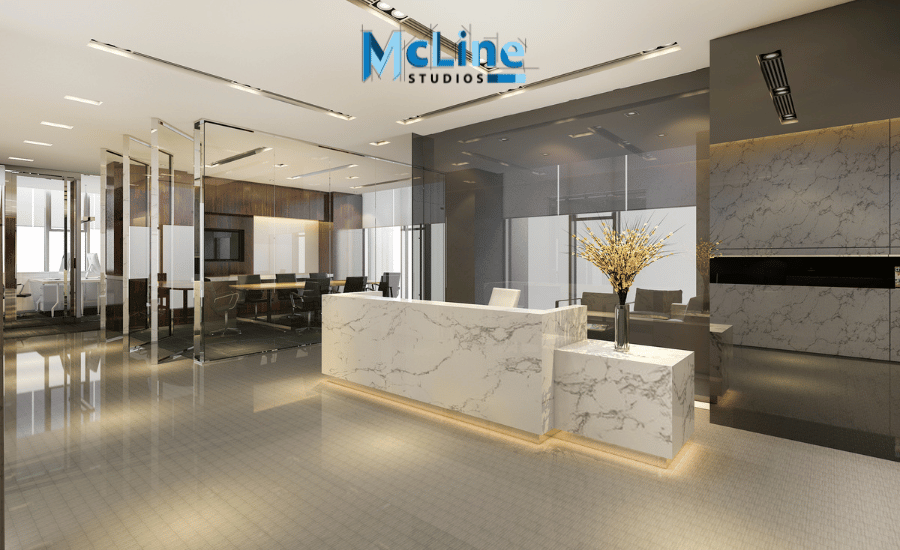
Architectural rendering, the art of creating visual representations of buildings, plays a crucial role in the design and marketing processes within the architecture industry.
However, achieving photorealistic and aesthetically appealing renderings involves more than just rendering software. Post-processing, an essential phase following the initial rendering, significantly enhances the final output’s quality and impact.
This article explores the pivotal role of post-processing in architectural rendering, highlighting its techniques, benefits, and the transformative effects it brings to architectural visualization.
What Is Architectural Rendering?
Architectural rendering is the process of creating 2D or 3D images of a proposed architectural design. These renderings serve multiple purposes:
-
Visualization: Helping clients and stakeholders visualize the final product before construction begins.
-
Design Communication: Conveying design intent, spatial relationships, and material choices effectively.
-
Marketing: Creating compelling visuals for marketing and promotional purposes.
Basics of Post-Processing
Post-processing in architectural rendering refers to the manipulation of raw renders to achieve desired visual effects and realism. It involves several key techniques:
-
Color Correction and Adjustment: Fine-tuning colors, contrast, and brightness to enhance visual appeal and realism. This step ensures that lighting and materials appear accurate and consistent with the design’s intended atmosphere.
-
Adding Textures and Details: Incorporating textures such as wood grain, fabric patterns, or stone finishes to surfaces within the rendering. This adds depth and realism to materials, making them appear more tactile and lifelike.
-
Depth of Field and Focus: Simulating camera effects like depth of field and focal points to mimic real-world photography. This technique directs viewers’ attention to specific areas of the rendering while blurring out less important elements, enhancing visual storytelling.
-
Image Composition: Adjusting the framing, angles, and perspective of the rendering to create a balanced and visually appealing composition. This step ensures that the architectural design is presented in the most flattering and impactful manner.
Enhancing Realism and Atmosphere
Post-processing plays a crucial role in enhancing the realism and atmospheric qualities of architectural renderings:
-
Lighting Effects: Adding artificial lighting sources, adjusting shadows, and highlighting natural lighting conditions to create a sense of realism and depth within the space.
-
Weather and Environmental Effects: Introducing weather elements like rain, fog, or snow can dramatically change the mood and ambiance of a rendering. These effects help clients envision how a structure might interact with its environment under different conditions.
Tools and Software Used in Post-Processing
Several software tools are commonly used for post-processing architectural renderings:
-
Adobe Photoshop: Widely used for color correction, texture blending, and final composition adjustments.
-
Lightroom: Useful for batch processing and enhancing the overall tone and mood of renderings.
-
3ds Max/V-Ray: Combining rendering and post-processing capabilities within a single software environment, allowing for seamless adjustments and fine-tuning.
Tips For Post-Processing In Architectural Rendering
Post-processing is crucial in architectural rendering to enhance realism and visual appeal. Here are some tips:
-
Color Correction and Balance: Adjust colors to achieve a realistic and balanced look. Use tools like curves, levels, or color balance adjustments to fine-tune colors.
-
Depth of Field: Simulate depth of field effects to focus attention on specific areas. This can be done using blur filters selectively applied to foreground or background elements.
-
Textures and Detail Enhancement: Try to enhance textures and details to make surfaces look more realistic. Use sharpening tools or texture overlays to add depth and clarity.
-
Lighting Adjustments: Fine-tune lighting effects to achieve the desired mood and realism. This includes adjusting highlights, shadows, and overall lighting intensity.
-
Adding Atmospheric Effects: Integrate atmospheric effects like fog, haze, or subtle volumetric lighting to add depth and realism to the scene.
-
Remove Noise and Distractions: Use noise reduction tools to clean up the image and remove distractions. Pay attention to details like unwanted artifacts or reflections.
-
Composition and Framing: Consider the composition and framing of the scene. Adjust cropping, perspective corrections, and aspect ratios to enhance the visual impact.
-
Final Touches: Add final touches such as lens flares, vignettes, or subtle glows to enhance the overall aesthetic and draw attention to key elements
Importance Of Post-Processing in Architectural Visualization
Post-processing is crucial in architectural visualization as it enhances the final presentation of designs. It allows for adjustments in lighting, shadows, colors, and textures, which can significantly improve the realism and aesthetic appeal of the rendered images.
Additionally, post-processing helps in correcting any imperfections or inconsistencies that may arise during the rendering process, ensuring a polished and professional look. Moreover, it enables architects and designers to convey specific moods or atmospheres by fine-tuning visual elements.
By employing techniques like compositing, color grading, and adding details such as people or vegetation, post-processing transforms raw renders into compelling visual narratives that effectively communicate the intended design concept to clients and stakeholders.
Ultimately, it plays a pivotal role in elevating the quality and impact of architectural presentations, making them more persuasive and visually captivating.
The Key Note
In conclusion, post-processing is not merely a technical step in architectural rendering but a creative process that elevates the quality and impact of visual presentations. By harnessing the power of digital tools and techniques, architects can create compelling, realistic renderings that inspire confidence and enthusiasm for their projects.
As technology continues to advance, the role of post-processing in architectural visualization will only grow in importance, offering limitless possibilities for creativity and innovation in design communication.






